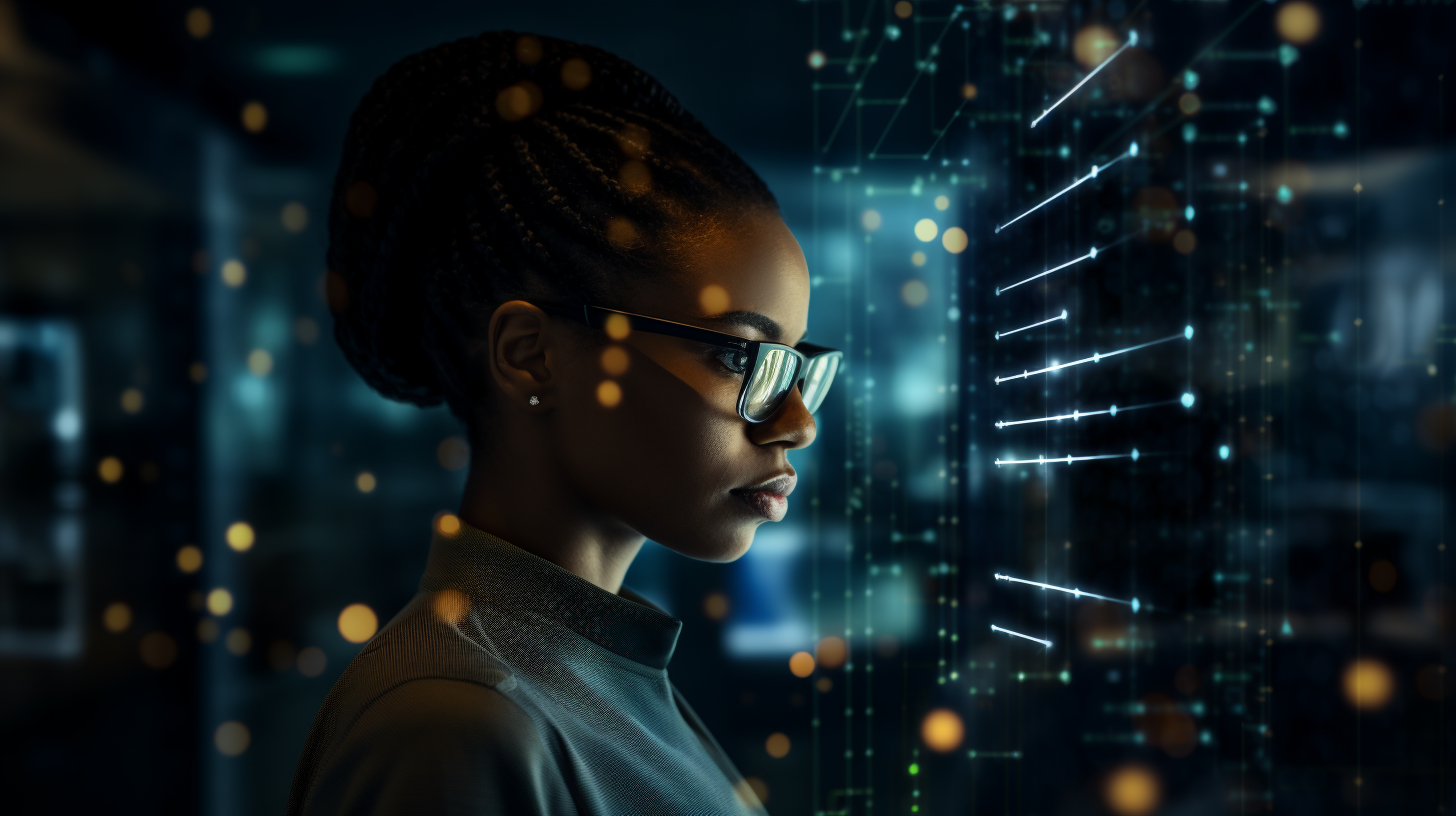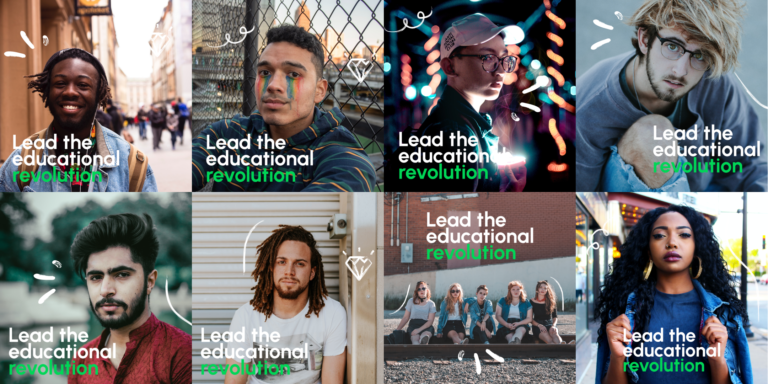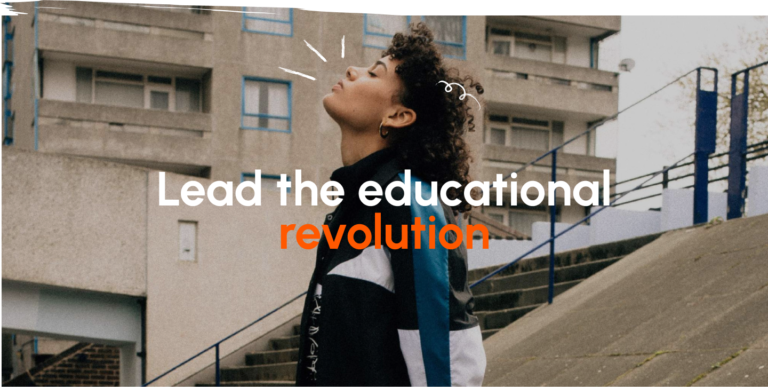As a long-standing player in collective intelligence, we saw the wave of generative AI as one to be ridden rather than endured. That’s why, over the past few months, we’ve been experimenting with several new uses enabled by these AIs.
We are looking at this exciting period with this conversation between Maxime Barbier (Associate Director, Chief Revenue Officer) and Kristy Anamoutou (Associate Director, Product and Technical Operations).
Maxime (M) – Hi Kristy. The massive arrival of generative AI over the last few months has uprooted every organization. At bluenove, we’ve taken the subject seriously and see it as a field of opportunities rather than an insurmountable constraint. Thank you for taking the time to share with the community and all those interested in these AI topics the lessons you’ve learned from experimenting with AI at bluenove over the last six months.
So, is generative AI changing how our teams design and develop our collective intelligence solutions and shape the promise of our products?
Kristy (K) – The answer is yes! Generative artificial intelligence profoundly changes our approach to software design and analysis capabilities. Today, for example, it’s no longer a question of simply offering an enriched text editor (i.e., RTE). We have entered the era of intelligent word processing. This new approach suggests improvements and iterations of the original text to our users, whether in form or content. It’s an actual invitation to augmented usage. Collective intelligence platforms, whether for gathering ideas, opinions, or conversations, have a mission to assist their users. Their aim? To improve the quality of their ideas and exchanges so that they have a more substantial, more relevant impact.
M – And more specifically, on the impact of ChatGPT. How did you perceive it at bluenove? Simple evolution or real revolution?
K – ChatGPT has been a real revolution. Its rapid adoption by the general public is mainly due to its instant messaging interface, which most of us have already mastered, whether through our usual messaging applications or chatbots. It’s a fine example of how, sometimes, the most striking innovations rely on familiar tools. The saying goes, “The best jams are made in old pots.” At bluenove, we quickly realized the importance of building on the successes of other applications, and ChatGPT is a perfect example.
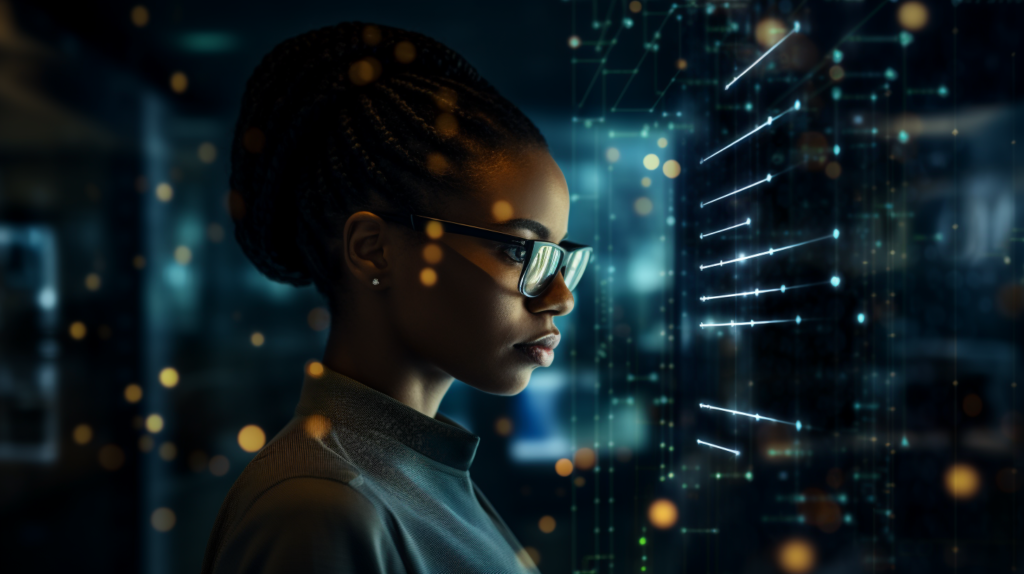
M – What about free access to certain services? How has this influenced bluenove’s approach?
K – The free access was a real boon. By offering free access to ChatGPT 3.5 in exchange for creating an account and using the data to train the model, OpenAI was able to benefit from pervasive user testing. This strategy enabled them to gather valuable feedback and build a solid community of expert users. The latter, in turn, have had privileged access to high-quality artificial intelligence, while others, by registering on waiting lists, have benefited from previews of new features (GPT4, APIs, Plug-ins), creating a dynamic of exchange and innovation around their products. This approach inspires us by emphasizing modern ways to manage user communities, combining free access with exclusive access to new features via the waiting list system.
M – What were the main technical challenges encountered by integrating IAG?
K – Integrating APIs and LLMs has been a real challenge. The results have been auspicious. However, we have encountered difficulties accessing servers, particularly those in the US. For example, as soon as the day started on the East Coast of the US, we experienced service interruptions in the middle of our working day in France. In addition, tokens’ limitations on European services slowed down our testing. All this has taught us to adjust our overall roadmap, incorporating this time of uncertainty and experimentation.
We’ve undertaken a whole R&D phase to learn how best to work with these technologies until a more local service, like the Bloom LLM project, becomes available.
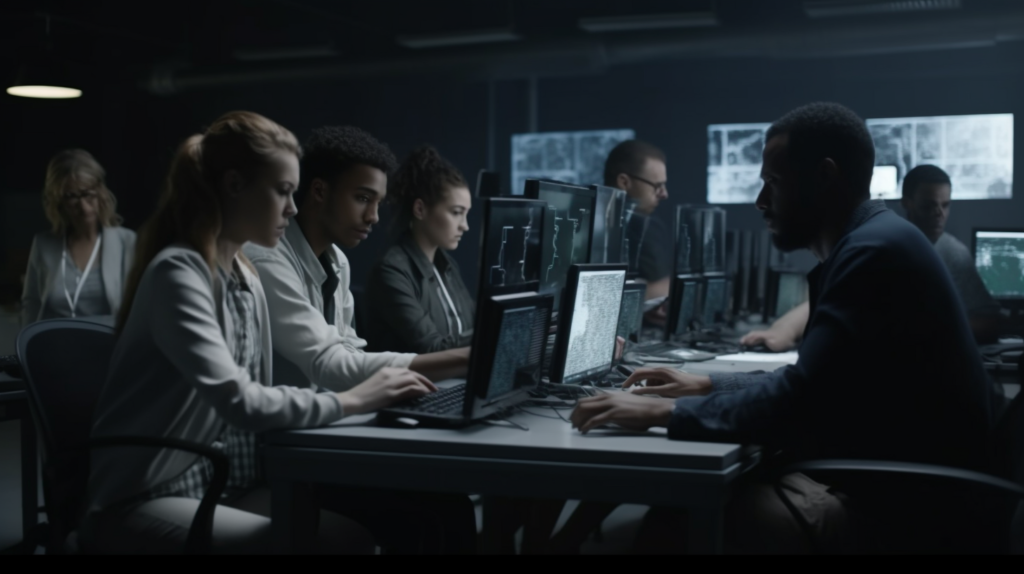
M – How do you manage the growing demand for specialist skills related to IAG?
K – This is a significant challenge for us. Since integrating algorithms into our platform, the demand for specialized profiles such as data scientists, data analysts, and prompt engineers has grown steadily. These talents are rare. But beyond recruiting for a company of our size, we firmly believe in upgrading the skills of our in-house teams (developers, consultants, designers):
· We provide them with the necessary tools, such as access and credit, so that they can test and experiment with the integration of AIG into our products.
· We regularly organize in-house “école 43” training courses dedicated to chatgpt and IAGs, and technical and product reviews to discuss opportunities and limitations,
· and we share our discoveries and surprises internally through NLP/AI design cells because we systematically take a step back and think critically about the impact of this technology.
Maintaining a clear, critical vision is essential, especially in a field where new products appear every week.
M – Ethics is a hot topic around generative AI. How is it taken into account by the tech and product teams?
K – The arrival of generative AI has been a real catalyst for us, encouraging us to put ethics back at the heart of our technical and product decisions. We regularly ask ourselves:
- Why integrate this generative AI? Is it necessary, or are we simply responding to a passing trend? What’s more, faced with the sometimes questionable practices of certain players, particularly in the US, our employees are quick to ask us how far we’re prepared to go in integrating these technologies.
- What are the limits we want to avoid crossing?
- What do we want to protect, above all, for our users?
These are the kinds of questions that lead to caring conversations and guide our choices and actions daily.
M – You get the impression that our businesses are changing quickly. It’s pretty dizzying. How do you see the future of bluenove’s businesses with the arrival of AIGs?
K – It’s something we think about all the time. AIG has the potential to revolutionize many businesses, but it all depends on how we choose to approach it. In digital transformation, an adage says, “You have to program before you can be programmed .”In other words, we have to take the lead, deciding on our trajectory before being simply the result of other people’s decisions.
As a matter of fact, we regularly ask ourselves crucial questions:
- What will be the future of our professions at bluenove, whether in the product, tech, or consulting fields?
- What place is left for human know-how in a world where AIGs can analyze, write, and design?
- What role does bluenove wish to play in this transformation as a major player in civic tech?
- Particularly, what responsibilities do we have towards our public and private customers, users, and teams?

M – With our Raison d‘etre, we’ve made the inclusion and accessibility of our platforms and processes a priority. Are these issues really at the heart of the AIG for you?
K – Yes, they are. At bluenove, we see inclusion and accessibility as the future of massive collective intelligence. We use tools like ChatGPT not only as a subject for dialogue with those who want to understand the issues but also to rethink our devices.
For example, we asked ChatGPT to design solutions to make certain content accessible to older people or those without internet access. It’s fascinating to see how, with the right personas and well-thought-out prompts, ChatGPT can generate innovative proposals.
The main challenge of any collective intelligence approach remains mobilization, and ChatGPT has become a significant asset for us in creating adapted and inclusive content.
M – At bluenove, we chose from the outset to be both a player positioned in the development and deployment of platforms and the analysis of contributions. This often leads us to analyze tens or hundreds of thousands of verbatims, as we did for the Grand Débat National, the Conseil National de la Refondations, or for strategic consultations undertaken by companies.
How do we approach the subject of semantic analysis in the GPT revolution? Is this the end of human analysis?
K – Semantic analysis is a field we’re passionate about. Although LLMs are powerful and capable of processing vast amounts of data, precision, and nuance remain intrinsically human skills. We’ve been experimenting with different protocols, combining various LLMs and embedding or classification methods. And even if LLMs can assign labels correctly, they still need to be ready to create ontologies that make deep, coherent sense. Embeddings, for example, allow us to perform calculations at record speed and aggregate thousands of data rows.
However, it remains essential to have a human eye to prioritize this information and give it real, full-fledged meaning. This combination of technology and human expertise makes all the difference (Ai & Hi coupling, Hi stands for Human Intelligence).

M – Finally, Kristy, there are also human and management issues. How has the integration of the IAGs changed the dynamic within our teams?
K – It’s an unprecedented and galvanizing adventure that you, too, are living, Maxime, in the bluenove entrepreneurial experience! The AIGs and LLMs are like new colleagues with whom we learn to work every day. Their integration is not just technical; it’s also human. This implies specific onboarding, appropriate training, and in-depth reflection on how to put them into production.
For decision-makers, executives and managers, it’s crucial to enrich teams’ daily lives with these new entities. Accordingly, this allows them to ask questions that are essential to the team’s future in a fast-changing technological environment:
- How do you build a team around the integration of IAGs?
- What skills do team members need? Which projects can benefit from their input?
- And above all, how can we share and learn from each other’s experiences?
It’s a whole chapter in the development of bluenove that we’re building together.
M – Kristy, to conclude and share the lessons learned, can you share with us the “10 key takeaways” that you have formulated from these lessons learned? These can guide companies’ voluntary, rather than submissive, adventures with AIGs.
K – Based on my recent experiences, here are ten laws for our ecosystem’s Generative Artificial Intelligence era :
Law of Augmentation: Generative AI doesn’t just enrich; it augments. It transforms the way we interact with software, inviting amplified uses.
Law of Adoption: The most powerful innovations are based on familiar interfaces. Rapid adoption stems from familiarity, not just novelty.
Law of Reciprocity: Offering free access can be a mutually beneficial exchange. In exchange for data and feedback, users receive state-of-the-art tools.
Law of Adaptability: Integrating new technologies requires flexibility and patience. Technical and logistical challenges are inevitable but surmountable.
Law of Competence: With the advent of AIG, the demand for specialized skills is increasing. Organizations must invest in the training and development of their teams.
Law of Ethics: AIG calls for renewed ethical reflection. Sound ethical principles must guide technical and product decisions.
Law of Proactivity: In the face of technological change, it’s better to “program” than to be “programmed .”Organizations must anticipate and shape their future rather than suffer it.
Law of Inclusion: IAG is a tool for inclusion. It can break down barriers, facilitate understanding, and create accessible content.
Law of Collaboration: IAG and humans are collaborative partners. While the AGI can process and classify data rapidly, the human provides meaning and perspective.
Law of Experimentation: IAG integration is a learning journey. Teams must be encouraged to experiment, test, and share their findings for a successful integration.
These laws should guide organizations and individuals in navigating the ever-changing IAG landscape, focusing on ethics, inclusion, and collaboration.
Maxime – Thank you, Kristy, for your valuable feedback. It gives us food for thought about the future of IAG in the professional world and in building the company of tomorrow. A company that relies resolutely, but ethically, on AI and collective intelligence to accelerate transitions.
Kristy – Thank you, Maxime. It’s always a pleasure to share our experiences and discoveries.
Did you enjoy this conversation? Don’t hesitate to react and contact us for further information: maxime.barbier@bluenove.com and kristy.anamoutou@bluenove.com
